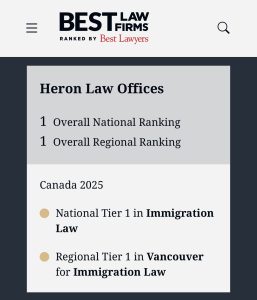
Background
We recently successfully completed the representation of a family (the “Y” Family) in their immigration appeal of removal orders for misrepresentation arising from one of the largest immigration frauds in Canadian immigration history, New Can. It was a perpetuated fraudulent scheme that affected several thousand applicants – both permanent residents and citizenships.
This particular matter started at the Federal Court of Appeal and eventually ended in two wins at the Immigration Appeal Division. One case was allowed on Discretionary (H&C) Relief after a hearing in Vancouver, while one allowed through a Pre-Hearing Conference in Toronto, on Minister Counsel’s consent.
What made this case rewarding is the fact that two grandparents are able to now stay with their grandson and granddaughter in Canada. Another couple (twin sisters) are able to pursue their full lives – including a relationship with a foreign national that was put in limbo.
Their case was ultimately compelling, but often times the immigration record produced through inadmissibility allegations tells only part of the story. As their representative, we needed to be the go-betweens and communicators to weave the law with the facts, presenting our client’s case in a legally and factually compelling manner.
We wanted to share what we learned from taking on this case below.
Three Takeaways
We wanted to review a few critical junctures of this case, in a bit of a post-mortem, as to where we believe key decisions were made that were both correct and incorrect.
Takeaway 1: If you have good facts, there may not be a need to pursue the intellectual exercise of legal reform – at the very least inform your clients of the choice and have them decide.
When we took on the case, our clients were prepared to go to the Federal Court of Appeal one of several families in group litigation over a matter of statutory interpretation (that was ultimately unsuccessful). Importantly, the Applicant did not want to be there, did not know why they were there, and were not adequately engaged to put forth a strong factual case at the earlier s.44 report stage. In short, former counsel was eager to go FCA but not as eager to hear out why their case should be successful on appeal.
Again, we cannot stress how important it is to spend adequate time (and resources – including paying for adequate translation) to understand the Applicant’s unique factual circumstances. In this case too there were legal circumstances regarding the age of the (then) children at the time of the misrepresentation hearing which could have been better explored and ultimately served as a sword for a two-prong approach.
Had the case focused on the individual factual scenario rather than an intellectual pursuit, it would have arguably been resolved much earlier.
Takeaway 2: Commit. Sometimes you need to put up a fight at the Immigration Division, even though your discretionary relief grounds are strong.
This one is something we recognized in hindsight was something we could have done differently.
We decided at Immigration Division to do a half in/half out strategy of neither conceding the allegations nor putting the clients on to testify. Our fear that a fight would negatively affect the assessment of remorse or other discretionary factors were ultimately unfounded.
In cases where there is a legal question, have it answered early – there is no use dragging it on for strategic purposes. Often times, the system scares us or directs us into seeking only discretionary relief but in cases where the law needs to be fought or challenged – do it. Also, put your witnesses up for testimony rather than rely on counsel’s submissions to advance points of fact on to the record.
Ultimately, we did use the possible challenge of the legal test at the IAD as a a leverage, but the file could have flowed more effectively with an upfront challenge. They say hindsight is 20/20. Lesson learned.
Takeaway 3: The Power of Separation. When Dealing with Different Factual Circumstances Separating Cases Can Be a Good Thing
When we started this matter, it was an uphill battle – but mainly because we did not have a full and complete factual record. Client’s previous counsel did not spend adequate time canvassing the full factual record, instead lumping the family into one big misrepresentation matter. When we parsed it together, we realized we had not just a family of four, but really three separate scenarios.
Our decision early on to realize there was:
1) a weaker case for mom,
2) a slightly stronger case for dad, and
3) two strong cases for the daughters
Understanding this difference allowed us to storyboard the approach to how we wanted to fight it. It helped that a natural separation (the daughters lived in Ontario and the IAD in Toronto was delayed) helped us, yet at first we were concerned about having the weaker cases go first.
However, ultimately – ‘best interest of the child’ – the key concept that continues to drive litigation in the humanitarian and compassionate grounds/discretionary case area helped us significantly. The Member had a very compassionate understanding (one we were able to get from Minister’s Counsel as well in their cross-examination strategy) helped us tremendously.
One thing we learned, that can be a huge practice tip, is that in certain cases – particularly where large scale misrepresentations are involved – there may be higher powers or departmental direction not to consent on these cases. Even where on paper you may appear strong you cannot forgo sufficient investment in client preparation for direct and cross-examination.
Also when one matter is successful, you can utilize the success obtained to be guiding (although not binding) on the second matter. When the first one consented on discretionary factors, factors that were stronger in the daughter’s cases, we leveraged this to try and pursue alternative remedies. Ultimately, we were able to obtain a PHC, and avoid a longer, re-traumatizing, and time consuming process.
The IAD, especially in the COVID-era, has been seeking to have more PHCs to better streamline cases. Especially with the IAD Rules changing to require upfront disclosure, this will no doubt be an increasingly necessary process to help take into account the often dynamic situations appellants face and experience.
Client Testimonial
The Client wanted to leave us a positive Google Review, but since we’ve decided to forgo the use of Google Reviews for our business, they sent us this snippet for us to share publicly:
After losing one appeal with my wife and my two daughters, we hired Will through a friend’s recommendation. During the entire immigration appeal process, we appreciated Will’s professionalism.
First of all, he listened carefully to our statement of the cause and effect, and took notes including every details. After that, Will made the plan step by step, and organized every evidence and related documents. In the last three years, when there is a question, we could almost get reply in 24 hours. My wife and I both know that all cases involving New Can Company were rarely successful. We are fortunate to have Will, who trusts us and understands our difficulties. Will was very responsive in the hearing. Everything went well because of his preparations in advance. At last, my wife’s and my appeal in Vancouver, and my two daughters’ appeal in Toronto were both successful. Our whole family is very grateful to Will and his team!




